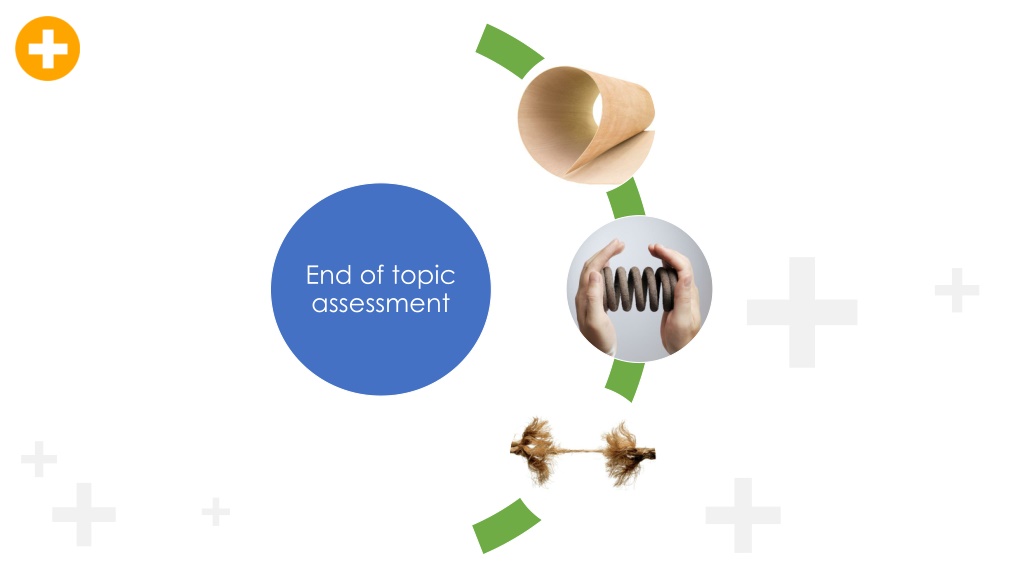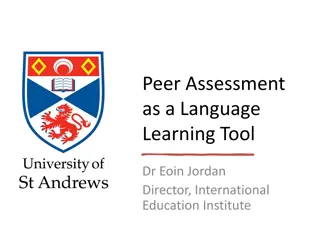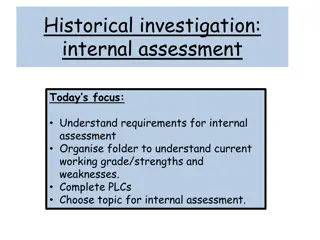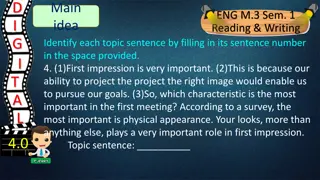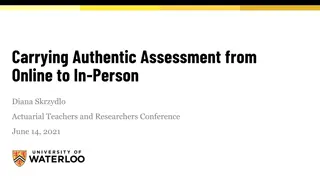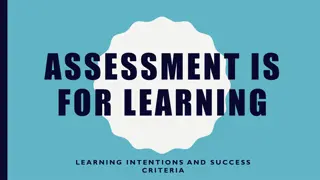End of Topic Assessment and Learning Objectives
Assess students' understanding of mechanical properties, material reactions, and classifications through an end-of-topic test. Focus on explaining application of knowledge and retention, and encourage revision techniques. The answers provided cover various properties of materials, including mechanical, electrical, and modern materials.
Download Presentation

Please find below an Image/Link to download the presentation.
The content on the website is provided AS IS for your information and personal use only. It may not be sold, licensed, or shared on other websites without obtaining consent from the author.If you encounter any issues during the download, it is possible that the publisher has removed the file from their server.
You are allowed to download the files provided on this website for personal or commercial use, subject to the condition that they are used lawfully. All files are the property of their respective owners.
The content on the website is provided AS IS for your information and personal use only. It may not be sold, licensed, or shared on other websites without obtaining consent from the author.
E N D
Presentation Transcript
End of topic assessment
Learning Objectives Understand the knowledge learnt in previous lessons Explain how the understanding can be applied Retain the information learnt and apply to assessment L/O Understand a range of information from previous topic using revision techniques
End of topic test You have 30 minutes to complete the end of topic test based upon the work we have done over the past few lessons. You will be given time at the end of the lesson to grade your work and figure out what we need to work on moving forward Exam tip Answer all questions Take your time Think about the context of the questions
End of topic answers Q. Define the term mechanical properties A. How a material reacts to an external force Q. A. Describe the shear effect on a product The sliding force applied to a material/product (ripping action) Q. What could be described as the mass of the material in a standard volume of space A. Density Q. Which material property is defined as the ability to withstand deformation through compression? A. Malleability
End of topic answers If a material displays properties which prevent the flow of electricity through it, it would be considered a Q. Electrical insulator A. Q. Explain why a workshop drill bit needs to be made from a hard material. A. Due to the nature of the product it will need to withstand compression force from the material and absorb the impact Explain the 3 classifications of polymers Q. Thermosetting, Thermoforming, Elastomers A. Larch is a type of material from what classification? Q. Softwood A.
End of topic answers Q. A modern material is? A material that has been developed over the last 50 years A. A smart material is defined as Q. A material that reacts to external stimuli (environment) A. Q. Explain the process of the Rockwell Hardness Test A. A diamond indenter is applied to a material once, that is measured then its applied again and the distance is checked between each marking Describe the difference between a simple workshop test and an industrial test Q. Workshop test is basic, simple, easy to create A. Industrial more complicated, accurate, expensive.
End of topic answers Q. Corrugated card is grouped with which material classification? A. Papers and boards Q. Define the term elastomer A material that can be deformed under pressure and will return to its original shape A. A material which can be scored, folded and cut with basic tools like knives and scissors to form nets is called a Q. Compliant material A. A material comprised of two or more different materials to enhance properties is called a Q. A. Composite (material)
End of topic answers Define 3 types of softwood timber Q. A. Accept any of these Pine, Spruce, Douglas fir, Redwood, Cedar, Larch Describe what is meant by a man made board Q. A. A piece of timber that has been created by man (in a factory) Briefly explain the Izod test Q. The Izod test will test the toughness of a material A.
